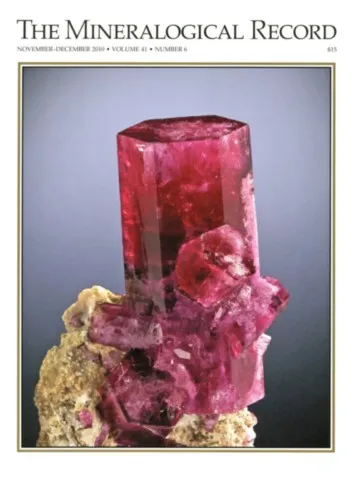How are collectible mineral prices determined ?
Collectible minerals, whether crystallized specimens or rough gems, attract enthusiasts for their beauty and uniqueness. The market for these items is global, ranging from mineral exchanges to specialized auctions. Understanding the determining factors in the price of collectible minerals is essential for collectors, investors, and researchers in the field of mineralogy.
Rarity and availability

The rarity of a mineral is one of the main factors influencing its price. Some crystals require extremely specific formation conditions and chemistry that are achieved only in a few very localized locations on the planet. Benitoite is a perfect example, present in only a few localities worldwide, and is particularly prized by collectors for this reason (Ottens, 2008). Specimens from depleted deposits, such as the famous Tsumeb mine in Namibia, can also fetch high prices due to their limited availability on the market. A rare mineral can be very available during a given period, this was the case for example with cavansites, a very rare mineral of a beautiful intense blue from the Deccan basalts (India). When these cavansites started to appear on the European market the prices were initially very high, then the discoveries of the years 2000 to 2010 flooded the market with samples, the prices then collapsed. Since the 2020s, much fewer specimens have been discovered and we are again seeing a significant increase in the prices charged, as this mineral becomes less available.
Right photo : Cavansite and stilbite from Poona, Maharashtra, India
Aesthetic quality and size
Crystal size, morphology, color, transparency, and organization are essential criteria for determining the value of a mineralogical piece. A bicolor tourmaline crystal with vibrant colors and remarkable transparency will be much more expensive than a dull, cracked specimen. Specific characteristics, such as perfectly developed crystals or spectacular fluorescence under UV light, can also increase the commercial value (Jensen, 2012). More technical morphological (epitaxy, pseudomorph, etc...) and crystallographic (twinning) aspects are also likely to significantly affect the value of minerals.
Origin
Geographic origin plays a major role in price assessment. Specimens from iconic or historical sites often have added value, even if they are not aesthetically superior. For example, quartz from the La Gardette mine (Isère, France) will have a much higher commercial value than much larger quartz from Brazil or Madagascar.
Trend and demand
The market for collectible minerals is also influenced by trends and collectors' preferences. The media coverage of certain deposits or minerals through articles in specialized magazines, television shows or on social networks can generate fashion effects that affect the market. For example, fluorescent minerals have gained popularity in recent years, which has driven up the prices of specimens showing bright fluorescence (Mineralogical Record, 2019).

Regional and global variations
Prices can vary considerably depending on the region. In the United States, specimens from the famous mines of Arizona or California can be very expensive, while in Europe, alpine minerals can reach similar prices due to their exceptional crystalline quality. In Western countries, there is a certain chauvinism, with local minerals generally selling locally for a little more than elsewhere. In developing countries, prices can be influenced by local factors such as currency fluctuations or extraction costs (Wilson, 2009).
Commercial value vs. sentimental value
Commercial value is to be detached from the sentimental value of a sample. Each specimen has a history, the minerals may indeed have been offered on a specific occasion, inherited from a parent, or simply collected in particular circumstances. These factors lead to a personal appreciation of the object that is not rational and is most of the time out of step with the market and therefore with the commercial value. In order to know the market price of a sample, it is best to contact a professional in the field who will be able to inform you transparently.
The price of collectible minerals is influenced by a combination of complex factors that go far beyond the simple aesthetic beauty of a specimen. Rarity, provenance, quality, and market trends all play a key role in determining the value of these objects. For collectors and investors, understanding these dynamics is essential to making informed choices.
References :
Bancroft, P. (1984). Gem & Crystal Treasures. Western Enterprises.
Jensen, P. (2012). Mineral Aesthetics: A Collector's Guide. Rock Hound Press.
Mineralogical Record (2019). "Market Trends in Mineral Collecting." Mineralogical Record Magazine, 50(2), 112-121.
